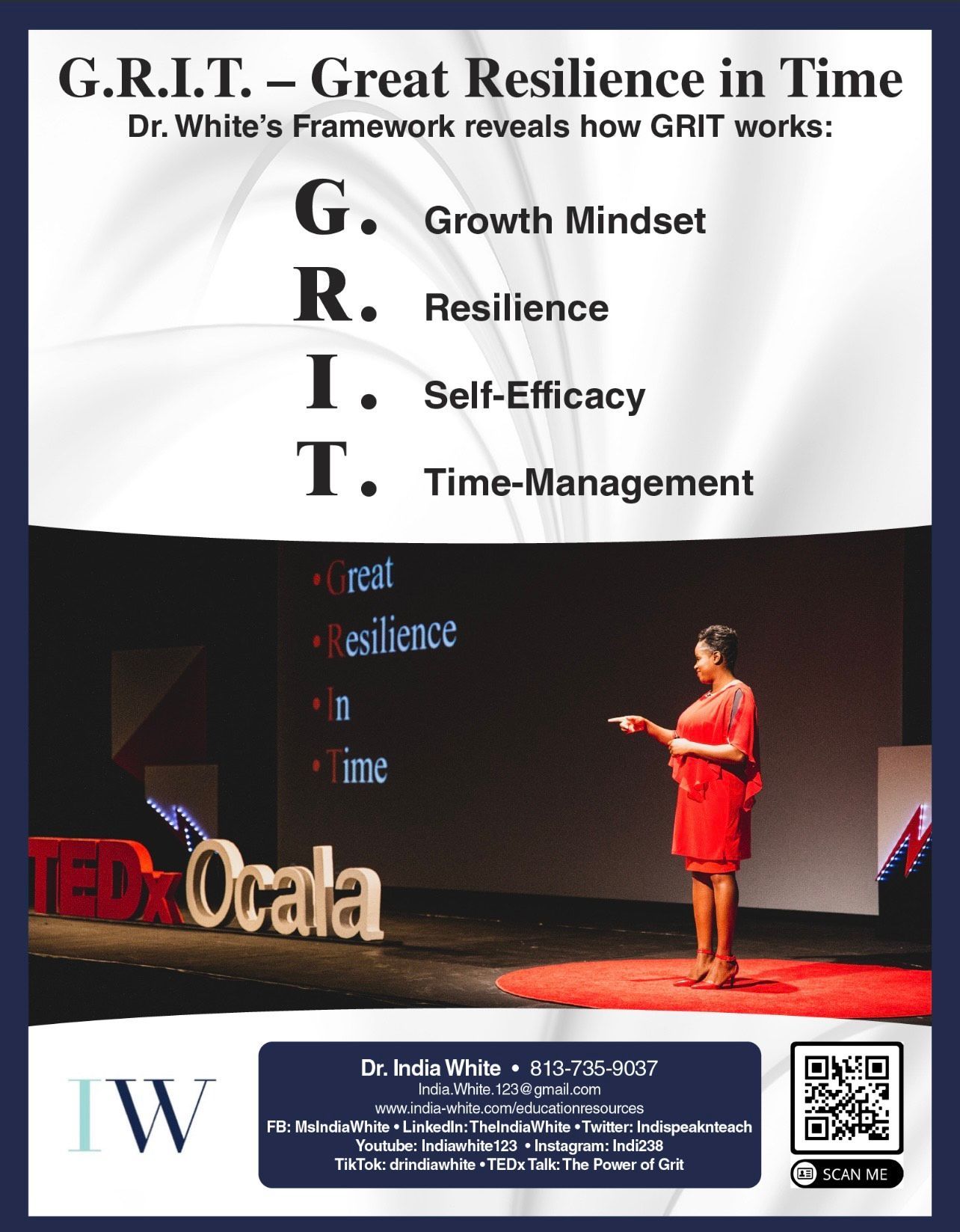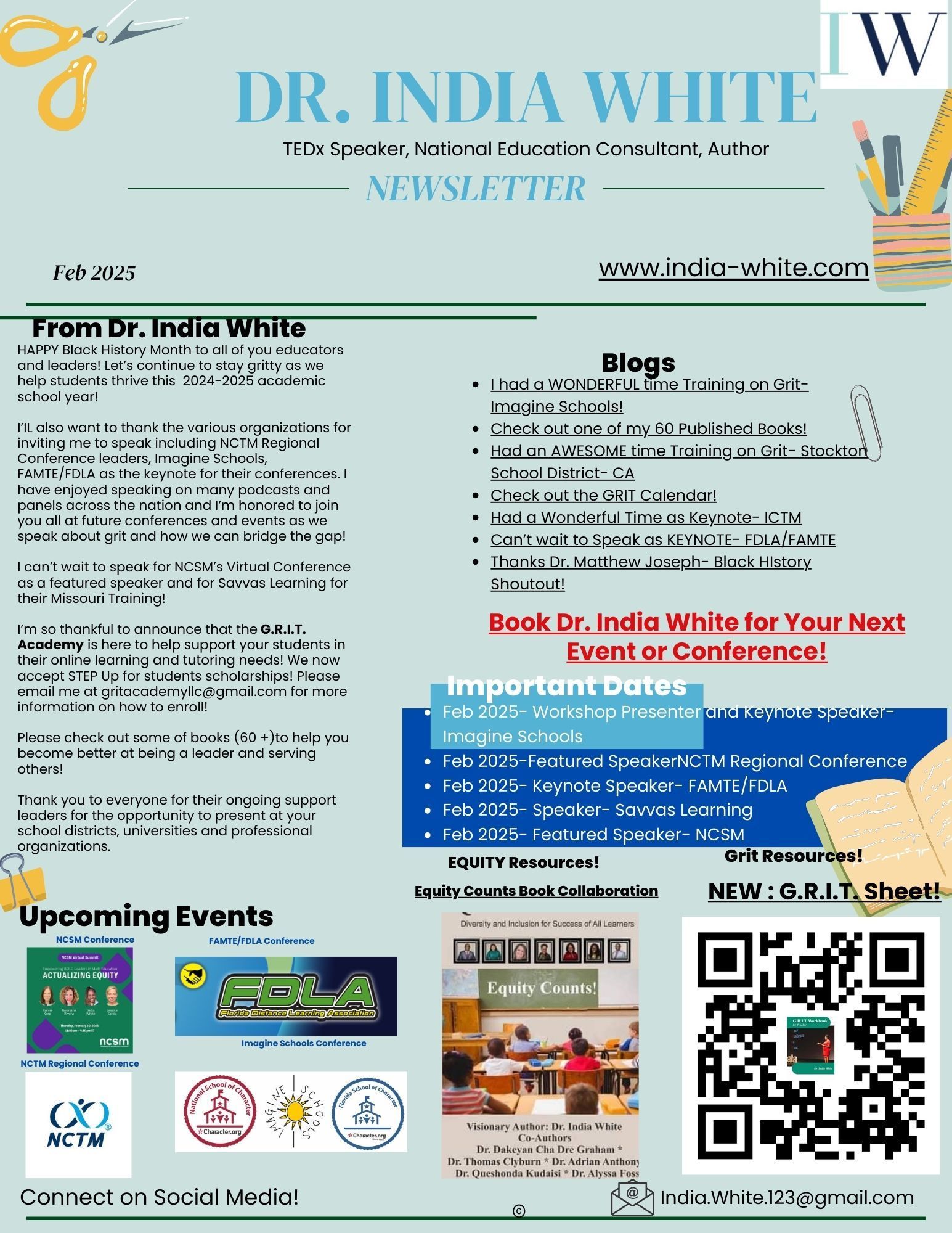How the G.R.I.T. Framework is Aligned with National Health Standards
Dr. India White's G.R.I.T. Framework, which emphasizes the pillars of Growth Mindset, Resilience, Self-Efficacy, and Time Management, aligns deeply with the National Health Education Standards (NHES). By focusing on building Great Resilience In Time (G.R.I.T.), this framework supports students in enhancing their health knowledge and behaviors, allowing them to meet these eight standards effectively. Here's how the G.R.I.T. framework aligns with each of the NHES:
Standard 1: Comprehend Functional Health Knowledge to Enhance Health
The G.R.I.T. framework promotes a growth mindset, encouraging students to embrace learning as a continuous process. This mindset is crucial in comprehending health information and understanding that they can continually improve their health knowledge. Self-efficacy plays a significant role as students learn to apply their knowledge confidently in real-life health scenarios.
Standard 2: Analyze Influences on Health Behaviors
The resilience pillar in the G.R.I.T. framework helps students navigate the influences of family, peers, culture, social media, and technology. With resilience, students can critically evaluate these influences and maintain their focus on health-enhancing behaviors despite external pressures. Time management allows students to allocate appropriate time to reflect on and analyze these influences, ensuring a balanced perspective that promotes their well-being.
Standard 3: Demonstrate Health Literacy by Accessing Valid Health Information
By fostering self-efficacy, the G.R.I.T. framework empowers students to confidently seek out valid and reliable health information, products, and services. A growth mindset further supports this standard by encouraging students to continuously refine their ability to find trustworthy sources, ensuring they can make informed health decisions.
Standard 4: Demonstrate Effective Interpersonal Communication Skills
The G.R.I.T. framework's focus on resilience equips students with the emotional strength needed to engage in difficult conversations about health issues, such as mental health or substance abuse. By using effective time management, students can practice and improve their communication skills over time, becoming better advocates for their own health and the health of others.
Standard 5: Demonstrate Effective Decision-Making Skills
Dr. White’s G.R.I.T. framework emphasizes self-efficacy, helping students believe in their ability to make informed and responsible health decisions. Through a growth mindset, students learn that making mistakes is a part of learning, which encourages thoughtful reflection and better decision-making over time.
Standard 6: Demonstrate Effective Goal-Setting Skills
The G.R.I.T. framework incorporates time management as a key pillar, allowing students to set realistic, achievable goals related to their health. Whether it’s developing a fitness routine or managing stress, students learn to structure their time in a way that promotes progress and achievement, reinforcing the growth mindset that health improvement is a gradual process.
Standard 7: Demonstrate Observable Health and Safety Practices
The resilience that the G.R.I.T. framework promotes enables students to persistently apply health and safety practices in their daily lives. As they encounter challenges, such as peer pressure or conflicting demands, resilience helps them stay committed to observable behaviors like wearing safety gear or adhering to healthy eating habits.
Standard 8: Advocate for Behaviors That Support Personal, Family, Peer, School, and Community Health
The self-efficacy fostered through the G.R.I.T. framework empowers students to be strong advocates for health—whether it's within their family, school, or broader community. With a growth mindset, they see their advocacy efforts as part of a long-term journey to improving health outcomes, understanding that even small actions can make a big impact over time.
Conclusion
Dr. India White’s G.R.I.T. Framework supports students and teachers in achieving the National Health Education Standards by building essential qualities like growth mindset, resilience, self-efficacy, and time management. These pillars foster long-term, sustainable health behaviors, ensuring that both students and educators can meet the challenges of health education with confidence and persistence, ultimately achieving Great Resilience In Time. Through the G.R.I.T. approach, health education becomes not just about learning facts, but about developing the mental and emotional tools necessary for lifelong health and well-being.
References
National Consensus for School Health Education. (2022). National Health
Education Standards: Model guidance for curriculum and instruction
(3rd ed.). https://www.schoolhealtheducation.org/wp-
content/uploads/2022/10/National_Health_Education_Standards_Guide
-10.02.2022.pdf











